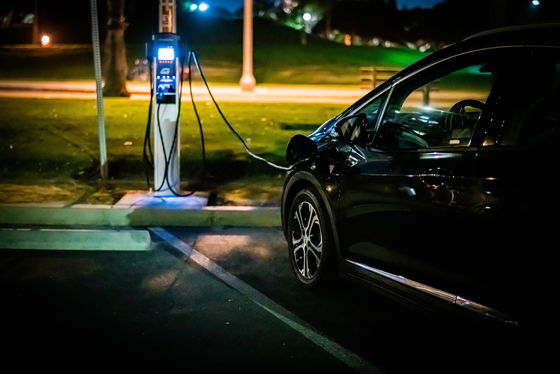Plans to deploy charging stations for electric vehicles every 80km announced

A
Four fast chargers every 50 miles—US unveils EV infrastructure plan | Ars Technica
https://arstechnica.com/cars/2022/02/four-fast-chargers-every-50-miles-us-unveils-ev-infrastructure-plan/
From 2022, the US government will provide each state with a $ 5 billion (about 580 billion yen) subsidy over five years to advance the plan to build a national network of high-speed chargers for electric vehicles based on BIL. The plan focuses on building an interstate highway system, building one electric vehicle charging station every 50 miles, where the 'electric vehicle charging station' is 150kW. It seems that at least four quick chargers will be deployed.
Each state will be able to apply for a grant from the government once the deployment of charging stations for interstate highways is complete. According to the joint office of the Ministry of Energy and the Ministry of Transport, if there is no power transmission facility nearby, it will be possible to handle the requirement of 'one charging station every 50 miles' as an exception.

Of the $ 5 billion grant, $ 615 million will be allocated for charging station deployments in fiscal year 2022, and another $ 300 million will be set up to establish a joint office. 35 billion yen) has been allocated. In addition, 10% of the one-year subsidy will be used to fill the gap in the charging network.
In addition, after the $ 5 billion grant program started, a plus $ 2.5 billion grant will be used to manufacture chargers for poorly serviced areas such as rural areas. It will be possible.
However, in order for each state to take advantage of the grant, as part of a plan to submit to the federal government, the reliability of the charging station (at least one charger per station should be at least 97% up) and the power grid. You need to make sure that the impact is suppressed. It is also required to design charging stations so that they can be easily expanded and upgraded in response to increasing demand and higher charging charges. In addition, the grant program recommends that charging stations be located near travel centers, convenience stores, visitor centers, restaurants, etc.

In addition, in order to claim the BIL-based charging station subsidy, it is necessary to install a combined charging system (CCS) -based charger. With the exception of the Nissan Leaf , most electric vehicles sold in the United States are compatible with CCS-based chargers. Tesla supports its own charging standard, but is reportedly planning to develop an adapter that will allow the use of CCS chargers.
In addition, charging station subsidies prioritize domestic chargers, forcing some manufacturers to start operations in the United States. Tritium of Australia, which supplies quick chargers to ChargePoint , an infrastructure company for electric vehicles, has announced plans to build a plant in Tennessee, USA that can manufacture 30,000 quick chargers annually. German electronics manufacturer Siemens has also announced plans to increase charger manufacturing capacity in the United States.
One of the challenges of charging station subsidies is that 'electric vehicle users are in a situation where they have to put various apps on their smartphones to pay for them.' Installing a credit card reader at each charging station seems like a solution, but some networks already support the ' ISO15118 ' standard, also known as plug-and-charge. For users of vehicles that are compatible with the ISO 15118 standard, simply plug in and the charger will be able to process vehicle recognition and payments.
The Charging Station Grant Program is to fulfill President Joe Biden's commitment to build a network of 500,000 charging stations across the United States by 2030, which will reduce vehicle carbon emissions. It is clear that it will reduce and drive the transition to electric vehicles.
Related Posts:
in Vehicle, Posted by logu_ii







